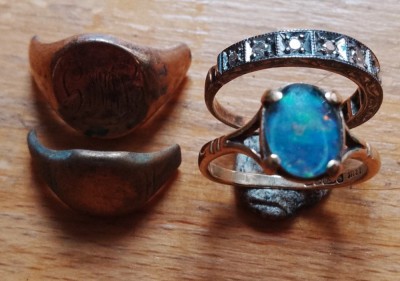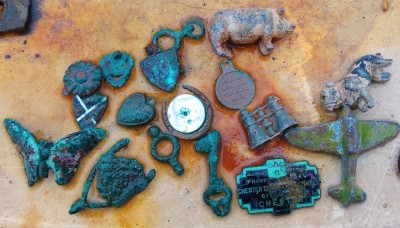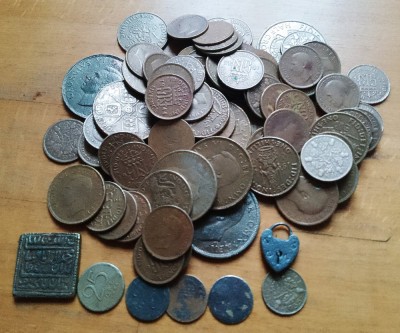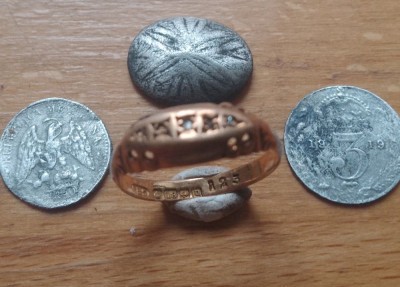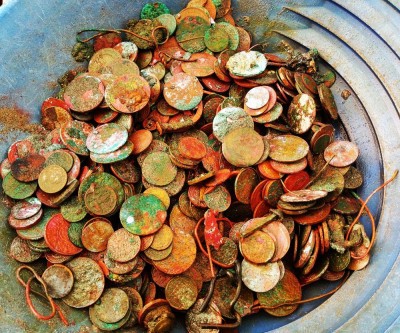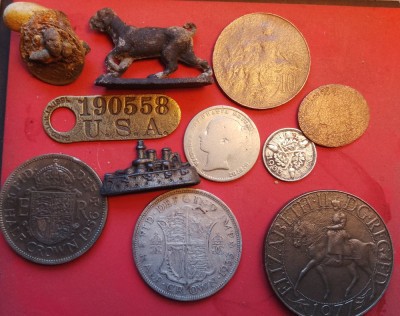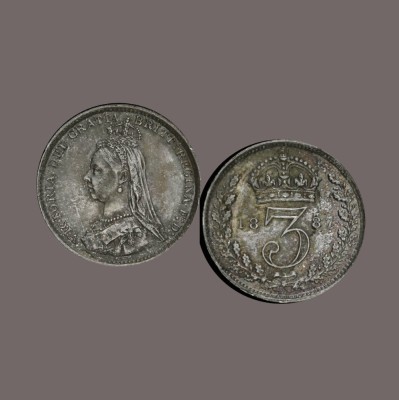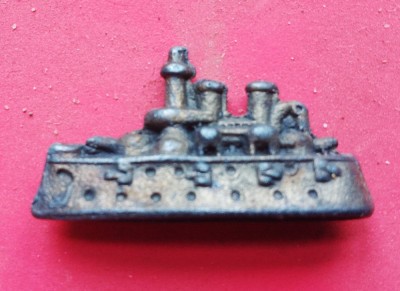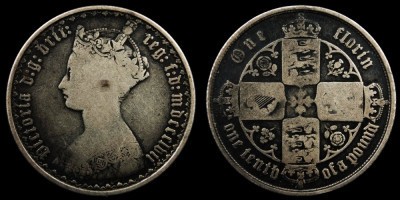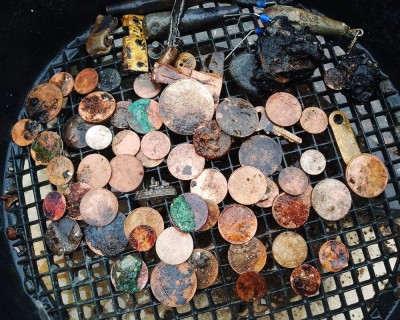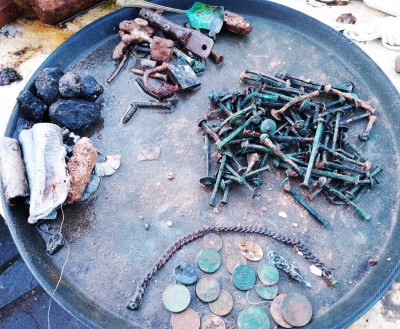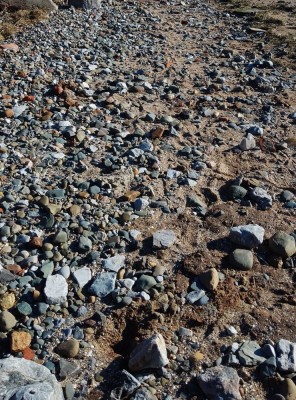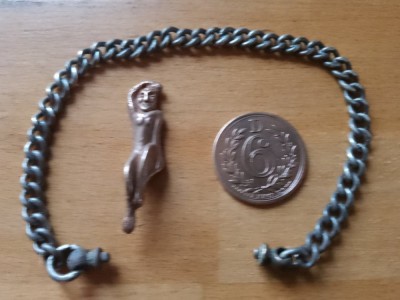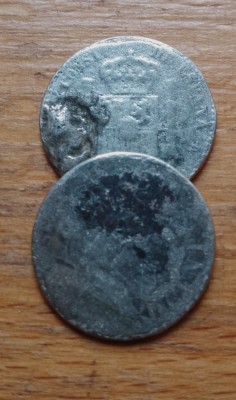-
Posts
14 -
Joined
-
Last visited
Recent Profile Visitors
The recent visitors block is disabled and is not being shown to other users.
stupot's Achievements

Contributor (2/6)
78
Reputation
-
Now it could be that an elliptical coil might appear for the d2. That would certainly be an interesting advancement for the d2, as it was for the d1. The latter machine became a whole new unit with HF operation. Fingers crossed ! My original observations from my last post regarding the m8, have not changed at all. I'm often hunting in places of a lot of big iron. I can do well with the m8 above the d2 9". Primarily due to its shape of course, but an elliptical from XP, might alter things.
-
Greetings from England! This is actually a very, very difficult topic to reply to - hence my late entry! It just boils down to personal preference. Unless you have two highly experienced operators checking together, preference is all we have. The Deus 1 I ran for 10 years & used both the HF coils when they became available, it changed it remarkably for the better. I detect mostly on arable land & the coast looking for older items. On the shore, the 10x5 D1 coil was excellent in dryer stony but heavy iron spots. Industrial rivers & beaches where big iron, bars, chunks, chain occur - a lot of iron. Not particularly 'holiday' beaches. Outside of that I had the Eqx with the 10x5 coiltek (superb) These two covered everything for me at the time. We always wanted a MF Deus & we finally got one. Initially, they only had 11" coils available, but a few months later the 9" arrived. This was like night from day for me personally, I took the D2 to the worst spots I had a cleaned up on & did even better. The D2 has the right facilities on the detector to control the responses from old iron like silencer, bottle cap & recovery etc etc. HiSq became my standard hunting audio after years of PWM. I only hunt audio whichever machine I have. Speed is of the essence on the coast & I won't waste time looking at its display. So the 9" got full marks easily. The Manti replaced my 5 year old 800 & I used it a lot on fields looking for ancient items. When the M8 coil finally arrived, I quickly got one and used it on the places I took the D2 with the 9" on the coast. That is now my favourite buy why? Working exactly the same spot as I did with the D2, I can make some observations but thats all they are unfortunately. In spots of big iron I always move as much as I can from the surface in this spot. I very carefully 'paint' the area as if painting with a 2" brush. Carefully & very slowly going at it from all angles - the MOST important factor I think. I did take my old Compass XP Pro there & also did very well! and why not? a great old machine with a CONCENTRIC coil....This is now 2 years of pummeling the same 50 yard square area. The d2 found a massive amount of stuff there, mostly coinage & related type items. The M8 has done me extremely well in the same spot, I was a little surprised but I know the Manti for me, responds better to small to very small non-ferrous items with its audio. That's NOT to say the D2 wouldn't detect them. All I can say is that i'm finding more smaller items (as well as plenty of bigger) than I did before with the d2. But, the amount is consistently higher quite easily. However, an obvious answer is that I have already taken out a lot of other stuff making it easier for the M8. But, I don't think so as the last three trips still yielded 150 old coins with the M8. Easy ones for the D2 as well, but in amongst that, are these smaller less conductive pieces consistently more than I found pre-M8. I do feel its footprint is a big part of the answer, but obviously the Manti itself I feel can respond better to tiny collectable items so that's included as well. But the D2 is always, always, my first choice to get in quick & clear out at the fastest possible rate. I think the end result is that the factors are: 1. The operator & their technique 2. The site 3. The detector (very last)
-
I pretty much scrap everything. Copper coinage, silver and anything else not worth keeping. In England, I live right on the coast with dozens of places within an hour, but finding them in scoured conditions is harder. But, I time if I keep an eye on them, it does come good. I switch to the manti with the m8 coil as a preference now in the worst iron conditions. Iron is not the same as you may think, the places i like are industrial foreshores and beaches. Here the iron is littered of all sizes including pieces I cannot lift. Keep digging!
-
Top marks for that effort. Those sorts of conditions are really rare and need to be taken advantage of. We can then remember those times for the rest of our detecting career! 'They died with their boots on Well done.
-
.thumb.jpg.435de4e259f1796cbed6ec8711efa9c5.jpg)
M-core M8 Coil Draws Blood On First Hunt
stupot replied to strick's topic in Metal Detecting For Jewelry
It's a great coil to use on the manti. It may take a a bit longer to cover that ground, but you've got all the great advantages of the m8. I'm very taken with it, mainly due to its fine shape. -
.thumb.jpg.435de4e259f1796cbed6ec8711efa9c5.jpg)
M-core M8 Coil Draws Blood On First Hunt
stupot replied to strick's topic in Metal Detecting For Jewelry
-
I've neglected quite a few places due to the fact that a couple of beaches have been very productive. Its all about priorities with me, some fields are only just drying out & i'm not inclined to go to most places until cultivation in April or thereabouts. On Saturday I went a little further than I normally do as we've had some massive tides and wind in the right direction. The section I had in mind is backed by dunes of considerable height with clay & peat in the lower layers. I have removed a vast amount from here over the years, it was a popular place in the era of early motor cars and before, not so much anymore. What I was faced with was a massive tide that had cut right into the dune leaving a huge area of disturbance. I full well knew there would be a lot of stuff but wasn't quite prepared for the sheer quantity. Took the Deus with the 9", knowing the place well t was right for the job. Instantly I put the detector at the base of the dunes, I could see coins strewn along the base on the gritty black or red layer with a good smattering of wartime iron too. They were all from Victorian through to 1950's- perfect, plus a few George III/IV Difficult to explain, but multiple signals under the coil at once was somewhat overwhelming as all were positive. It took a few minutes for me to switch into fully auto mode. For the next 3 1/2 hours, I dug constantly as well as eyeballing many on the surface. Literally they were all over the place, but I kept up a strict discipline of straight overlapping lines pulling stuff every few seconds. I could see there were quite a few silver coins along with other stuff. In these situations, my recovery rate was as fast as I could go, on & on. At the end my bag was really heavy with mostly coins but with a couple of rings thrown in too, one with a decent Opal. By dark I gave up totally worn out. Back at it next day I hit exactly the same spot with similar results, but not quite in the same numbers. I noticed that the coins were mostly smaller than the previous day which is normal on a second less intense pass. Day 3 was interesting as many more small bits came up including a couple of broken gold 9ct rings & many small items. Lead toys were very common, some intact & a good time indicator. The totals were for Day 1 328 coins, then 169, lastly 102. In the first batch were 60 silver mostly pre 1947. Three days gave 109 silver back to George III. Quite a few pre-vic coppers came out too. Silver coins in England changed fineness after 1919 from sterling to 50% up to 1947. Its a personal record on day 1, you can quickly work out the rate of coins dug per hour. What helped the speed was the Deus with very tight settings so responses were channeled into very positive only settings. On the second & third days I opened it up to catch other items, this I have found is the best method in these situations. Needless to say I've been back there with much less results, down to a couple of dozen yesterday. Not since the '89 Hurricane in this country have I done so well. Then, on a full day I retrieved over 600 old coins from one beach alone, but that was over seven or eight hours. Its rare even for me to come across these situations, very intense detecting that will be well remembered. There is now a massive haul of coins in the scrap copper, this will exceed last years enormous haul thanks to the d2 and manti. Photo 3 are silver coinage from small 3 pence (Like 3c silver) up to half crown (bigger than 50c piece).
-
Have had two tags from here with different numbers. It's says PATD JAN 13 1891.
-
2 Georgian should read Halfcrowns, a 50c size coin
-
From the bottom left to right coins. 2 Georgian, one of silver, an queen Elizabeth silver jubilee crown. In the middle coins are queen Victoria silver shilling at the side is a silver threepence from the 30's. Above is a ww1 French 5 centimes and at the side is an indian head! I find a lot of foreign coin s in this area, including quite a few early USA ones. I'll put up some photos of those along the way. This beach was an extemely busy port area for ships for a couple of hundred years. Any information on the brass tag would be welcome. Many thanks
-
I'm one of those hunters that is quite happy shifting a lot of stuff looking for the right items. Always at the back of my mind are those nice little yellow Sovereign gold coins which will occur in these conditions eventually. Since we had a storm here in England, I've been out a lot. Most places were quite yielding to the Manticores small coil as I've been working at the base of sea walls that have been heavily scoured out. I'm finding the Manti small coil absolutely perfect for me close to the wall where the metallic debris is immense. Its shape & size is the key factor for me in these situations. Its not the best place for rings, but there sure are plenty of targets. I like to see lead toys, watch keys earlier coins & anything else from before WWI or thereabouts. This is because gold coins circulated in England into the late teens. Normal procedure is to clear blocks of stone, and especially iron cobs & other large pieces to get a relatively flat work area. Most people won't comprehend or understand the sheer volume of iron or how to work it, this is actually good as it restricts most folk except certain old gritty sea salts!!! Best coins were the Victoria silver Gothic Florin (about 50c size) which don't turn up very often, and especially the 1887 3 pence stuck in the clay in 'keep' condition. A little Dreadnought class cracker toy is one of several I've had this year but its the best for well detailed casting. The US Army tag is similar to one found last year, it has a patent date to check on, likely WWI?? Yet another 1977 Jubilee Crown to go with the other similar five type crowns I've had in the same spot. The Deus has not been neglected - Its been in full swing the last couple of days. I'm quite happy picking up either machine dependent on where I go, or not actually! I do like both.
-
Really interesting post. Here in England we don't get, or invent come across, anything like this. We do get pockets of black sand containing haematite, magnetite and other heavies including garnets, all micro. In some of these bigger pockets, there are a couple of pound a of the stuff along with iron and other collectable goodies. This occurs on clay or bedrock when the tide windows the stuff all into one area. always worthdigging out by hand.
-
stupot changed their profile photo
-
Must be a martyr, this is how i like it! This small section was covered in a foot of sand two years ago until an easterly blast shifted it all out completely. Since then, it only gets a few inches of sand over the clay, but enough to make all the difference as to whether you find something or nothing. The high winds last week did clear enough off the section to make it worthwhile, but its such a difficult spot. There's the iron, largish cast pieces down to nails etc, very liberally spread as the whole area is where metallics are winnowed into these few yards by tidal movement. The main problem, is the quantity of copper and brass nails/screws from the boats. I don't mind copper but its very difficult to work with these as well as the iron due to the constant tiny vague positive responses. Its the usual discipline for me to do several parallel lines through the length of the patch very slowly. Thereafter, come at right angles across the narrowest part very slowly indeed. Many of the bits were showing on the surface which helped. Chucked out all iron I could see as per usual, and pocketed the useful scrap bits. Last run here a year or more ago, everything was pretty much on the surface - much easier. Actually, its one of the few times I wish i'd had a 3" coil. However, the small Manti coil with its excellent shape being a key factor, worked really well, but you had to go very, very slowly overlapping all the time from all angles. I have used the D2 9", but you do definitely need the shape of the Manti one to get the best out of the spot, if only the elliptical was available for the D2 as it was for the D1 - a great coil. It took three hours and a bit to cover the spot as well as I could. The constant ear bashing from ferrous & NF takes it out of you. The reason why I persist in these places, & this one in particular, is the old finds that have come from here. Quite a few hammered, including early foreign ones and other really interesting artefacts. Not many coins turned up but two were of later Spanish origin, 40 cents, in poor shape, but I 'm on the scent! Spanish coins are pretty much the epitome of beachcombing even here in England! A decent silver watch chain was a surprise, first one I've had at this spot, along with a 6 pence Welsh Cardiff token and a Cornish 'Joan the Wad' likely from a key-ring. Years ago, the whole area was under heavy tidal scour, but sea defenses have closed off the tidal flow now. Where once big tides cut deep gutters, a whole new sand dune formation has taken root. Still, I will persist in these areas as long as they can be worked productively.
-
Had the coil for several months here in England. If you have a use for the coil, you will not be disappointed. The shape of the coil is key in it's performance, and is a really good piece of kit in the right places. Never feel under gunned with this little gem - and small coils in general. They are unavailable in this country and many others as well, but they'll turn up eventually.


